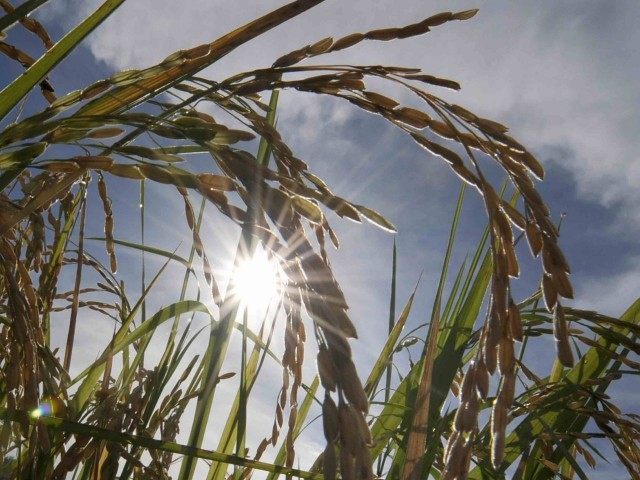China’s President Xi Jinping will sign an agreement to open up China’s rice market to U.S. exports as part of his economic charm offensive this week, after signing a $38 billion aircraft deal with Boeing in Seattle.
U.S. rice producers have been demanding China honor commitments to open up its domestic market to agricultural imports under the World Trade Agreement signed in 2001. But China has kept the world’s fourth largest producer out of the world’s largest market by requiring extraordinary phytosanitary–or pest control–measures along several points along the supply chain, according to Stratfor Global Intelligence.
The United States is the world’s fifth largest rice exporter and sells product to Mexico, Canada, South and Central America, the Middle East and Japan. But despite heavy lobbying of Congress and threats to retaliate, China locked out U.S. rice farmers.
China is on a collision course with the U.S. over cybersecurity violations, and Congress has threatened the “Red Dragon” with the impositions of trade sanctions. However, a goodwill deal that has long been advocated to allow U.S. rice to enter the Chinese market is set to be signed during President Xi’s visit.
After China openedup imports from U.S. soy bean growers in the 1990s, volumes exploded. In the last decade, American meat and dairy producers shifted their practices to meet the growing Chinese demand created by the expansion of the middle class. Rice producers now hope to do the same for their high quality product.
China is world’s largest producer, consumer and importer of rice. But it has been unable to meet its own volume needs as demand has boomed since 2012 from 468 million metric tons to an estimated 493 million metric tons this year. China has been primarily importing rice from Vietnam, Thailand and Pakistan. Beijing’s rigid food security policies that have been used to keep the U.S. out also keep domestic prices inflated. That creates huge financial incentives for U.S. exporters to enter the market.
Beijing has a policy aimed at being self-sufficient in rice production because of “its centrality in the Chinese diet”, according to Stratfor. But facing the risk of huge crop losses, as Asia is expected to swelter under what could be one of the most intense El Niño eventss in history, the long awaited signing of a rice export protocol could start American rice moving toward China in the next 30 days.
Although California is only the second largest producing state in the U.S., its proximity to Asian markets means that most of the American exports will come from rice growers clustered along the Sacramento River and its tributary, the Feather River.
Unlike California farmers in the San Joaquin Valley to the south, who rely on contracts with state or federal water projects and received little or no water during the this summer’s drought, many rice farmers were helped from spring floods and more reliable summer water supply rights.
The international food price index, which includes rice, recently hit the lowest level in six years. But U.S. rice exports command roughly a $200 per metric ton premium over their Southeast Asian competitors.
Concerns over the quality of Chinese domestic rice include reports of heavy metal contamination, and could allow American exporters to ship over 200,000 metric tons initially, with a value of about $100 million based on current prices, according to the U.S. Rice Producers’ Association surveys of Chinese consumers.

COMMENTS
Please let us know if you're having issues with commenting.